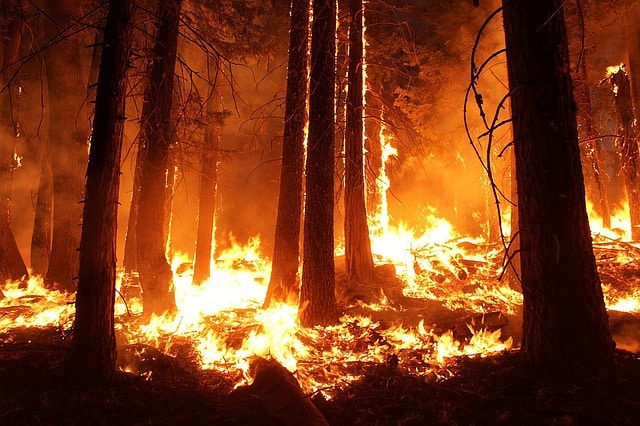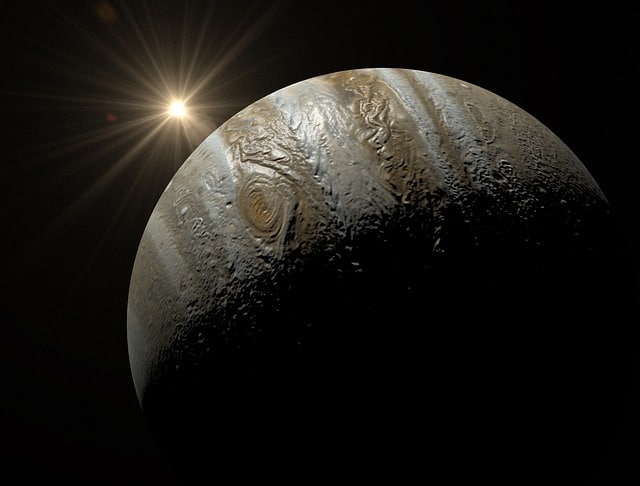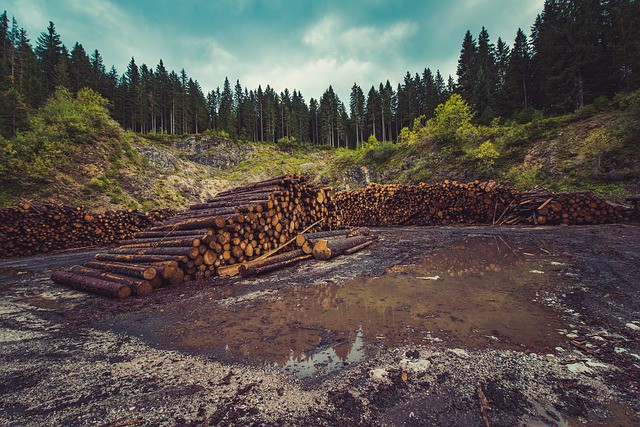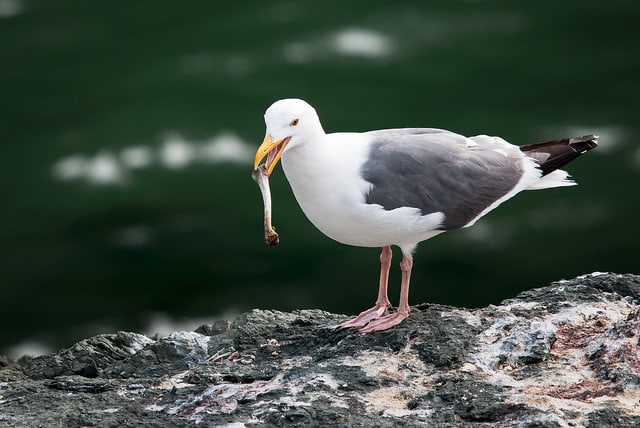The Carbon Cycle
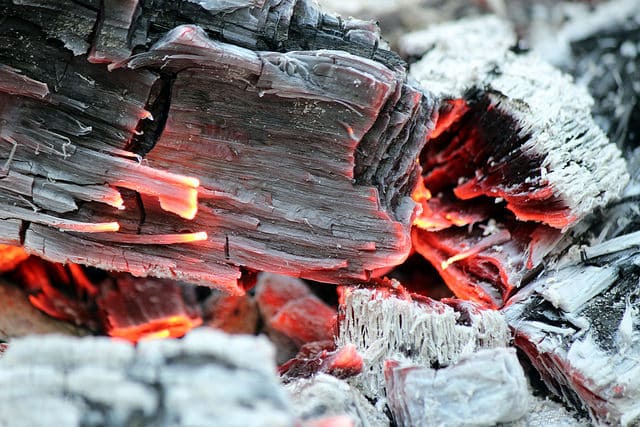
By now we’ve all heard of the expression the cycle of life. Keep this in mind as you briefly learn how the carbon cycle originated and how it operates within our earth’s ecosystem today. Today, it remains an evolutionary process of keeping checks and balances and restoring a natural order of giving birth to life and then sustaining life. And in this natural order, some things inevitably will die.
This life-giving cycle can be explained briefly as follows. Note why and how the adverb operates in these highlighted features.
- The carbon cycle is the continuous circulation and transformation between all living organisms and within the Earth’s environment.
- Before being released into the earth’s atmosphere, carbon is stored in what are known as carbon sinks, basically most living and non-living organisms on earth.
- What is not or no longer used on earth is eventually released back into the earth’s atmosphere.
- In extreme instances, carbon dioxide (CO2), after being processed and used in the earth’s atmosphere is released through geologic events, such as volcanic eruptions, and sea temperature increases.
- The speed of this cycle varies, depending on the living organism.
- In simplified and often beautiful terms, we can witness the carbon cycle ourselves. As a tree continues to grow it will also continue to shed its leaves.
Just as human activity is upsetting Earth’s carbon cycle, our actions are altering the water cycle.
~ David Suzuki
Whether it is a source of life or the creation of something new, methods are used and a routine, unchanging but revolving process is followed to ensure its effectiveness in carrying out its primary objective. Routine is said to be good for human nature. Nature relies on routine in order to survive. The carbon cycle responds accordingly. Here, its routine processes are briefly outlined.
- Carbon compounds are converted across each other within the earth’s natural environment.
- Carbon dioxide (CO2) is converted into living organisms through a process known as photosynthesis.
- Through the breathing of all living organisms, the rotting of dead organisms, and now the burning of fossil fuels, CO2 is returned into the earth’s atmosphere.
- Thermonuclear reactions are believed to occur in the stars, in which carbons continue to be broken down and re-formed, causing hydrogen to be converted into helium.
- Carbon is popularly known as the ‘building block of life’ because the life-giving foundations of all living organisms are laid mainly in carbon and its carbon compounds.
- The carbon process goes through a number of different stages, beginning with photosynthesis.
- This process is popularly followed in scientific and academic studies by observing how plants capture and release the sun’s vital energy sources.
- Crucially, animals consume plants and, in turn, breathe out the carbon dioxide that was taken in.
Think of how life on earth originally began. The levels of carbon dioxide and methane gas in the earth’s atmosphere then would not have been conducive for living in. But the CO2 and gas was necessary for laying the foundations of life. Here, we briefly highlight some of the sources of the carbon cycle as it is now.
- Carbon contains other life-giving elements such as calcium, iron, nitrogen and oxygen.
- Carbon compounds manifest in all living organisms, from flora to fauna, and also in non-living sediments such as soil and rocks.
- Anything that is not consumed by living organisms will inevitably be left to die, however, decomposed organisms also provide life in the form of nutrients for the soil.
- You also begin to understand why there is a need for so-called green lungs, because rates of recycling naturally are dependent on organisms within plants.
What Are the Sources of Carbon?
Sources of carbon are both natural and human-induced. Carbon dioxide has been released naturally into the earth’s atmosphere since long before man first walked the earth. The natural process, however, continued for thousands of years during mankind’s existence. It is only since the Industrial Revolution which started in the middle of the nineteenth century that man’s impact began to be felt. These next few points highlight the main contributors.
- Let’s focus on the human contribution, mainly because it is relevant to what is happening today. Most of humankind’s emissions come from the burning of fossil fuels – natural gas, oil and coal.
- Heat and energy production through electricity is another major contributor. Transport, particularly road transport, is yet another contributor, however, shipping transport’s contribution to CO2 emissions is less than 20 percent overall.
- Deforestation, mainly carried out for industrial purposes and human consumption, can be quite literally considered a killer, because as a natural source of carbon, forests are vital.
- The natural process includes decomposition; in which anything that is not consumed by living organisms is left to die. But these decomposed organisms also provide life in the form of nutrients for the soil.
You also begin to understand why there is a need for so-called green lungs, because rates of recycling naturally are dependent on organisms within plants. This principle of recycling, replicated by humans, makes a valuable contribution towards reducing (harmful) greenhouse gas emissions.
The Carbon Footprint
The root of today’s global warming and climate change, we now know, is not the carbon cycle but rather what is now popularly known as the carbon footprint which can also be measured from its most extreme manifestations right down to the lowest level which begins with what we do and how we conduct ourselves. Human behavior is now having an extremely adverse effect on the carbon cycle itself. This needs to be checked. Here are a few measurable things to consider.
- The home environment – Everything we do in our own homes has a direct impact on the carbon cycle. Even on the lowest socio-economic level, there is a tendency to reap and consume far more than is necessary. Inevitably, what is not used is wasted. And how waste is discarded also has consequences.
- What we eat and what we throw away – There are always leftovers, from the bones of animal products to the scrapings left behind in a frozen yogurt cup. Then there are the minute crumbs left behind after eating a sandwich or a packet of crisps. Healthy sustainable food products, such as fruit and vegetables can be turned into natural waste which contributes positively to revitalizing the natural carbon cycle.
- The use of water – Rather than consume water, people have a tendency to waste water. It also impacts on the use of artificial power such as that used by the hot-water geyser. Even water used to wash dishes with chemically-induced detergents is wasted and harmfully impacts the natural environment.
- Energy sources – The Earth’s population has grown dramatically since early in the last century. Socio-economic factors also play a part with many poor people burning fires at night. Middle to higher income earners, on the other hand, burn excessive amounts of industrialized fossil fuels.
- Transportation – Instead of walking or taking the bus, most people who can still choose to travel in their own vehicles. Major urban areas’ transport networks across the world, with few exceptions, are heavily congested with traffic throughout the day.
On the lowest levels, there are many things that we can do as individuals or collectively to address the problem of excessive levels of carbon dioxide and methane gas in the earth’s atmosphere. To conclude this short introduction on the carbon cycle, here are just a few things that can be done as early as today.
- Walk and cycle – Instead of using the car, walk or cycle to work. If the distance is long, take the bus or train.
- Re-use water – Re-used dirty water is also called gray water. But home users will have to source organic alternatives to detergents containing poisonous carbons.
- Create a healthy eating plan – Healthy, natural foodstuffs can be recycled in the garden as manure or compost and be used to feed the plants.
- Less is more – Simply put, an esthetic and spiritual paradigm shift is required to ensure that we live more sustainably and take care of our natural and human surroundings. Literature on how to make positive changes is widely available.
So, now you have a better idea of how it all began and what keeps us alive today. But as in human life, consuming everything in moderation allows us to lead healthy, balanced lives. The same moderation is necessary for the carbon cycle to continue to sustain and invigorate life on earth. Therefore, we need to take more urgent action to reduce what is scientifically and popularly known as our carbon footprint. Earth was uninhabitable in the beginning. If we continue to encourage this, it will be uninhabitable in the end.

